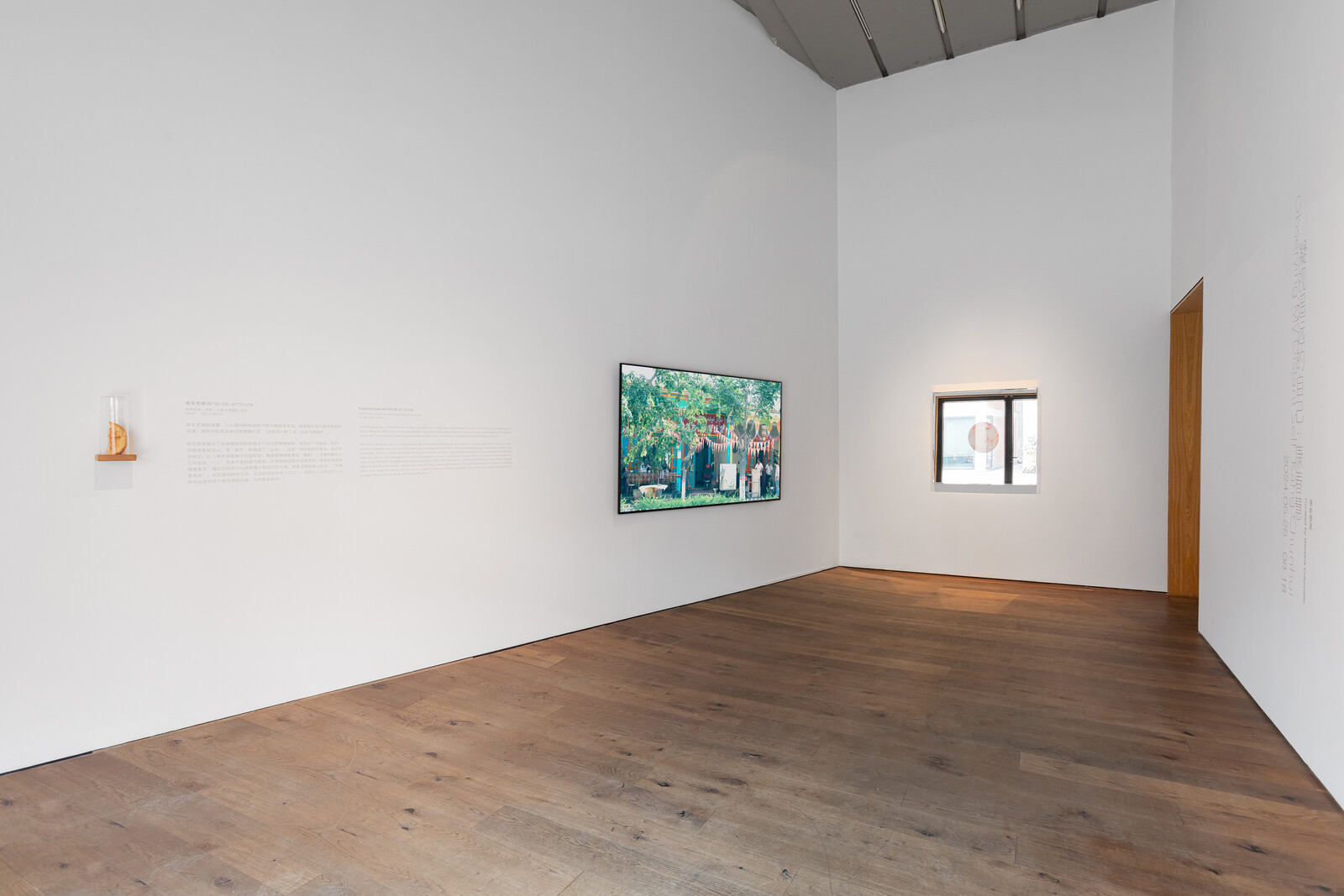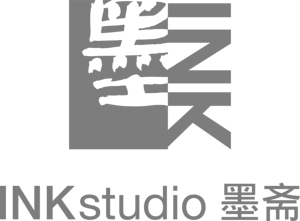May 25–August 18, 2024
Red No. 1-B1, Caochangdi Chaoyang District, Beijing, China 100015
100015 Beijing
China
Hours: Tuesday–Sunday 10am–6pm
info@inkstudio.com.cn
Observing My Distant Self: Kang Chunhui
Curator: Nataline Colonnello / Dates: May 25, 2024–August 18, 2024 / Location: INKstudio, Red No. 1-B1, Caochangdi, Chaoyang District, Beijing, China 100015.
Observing My Distant Self: Kang Chunhui marks the artist’s premiere solo exhibition at INKstudio, offering an immersive journey into a crucial juncture in her artistic development. The exhibition unfolds in two distinct sections: “Observing My Distant Self” and “Undeniably Me”.
Observing My Distant Self
“I found myself in a landscape reminiscent of the Western Regions, particularly the ancient city Loulan that has long since vanished. I stood atop a hill, observing my distant self—undeniably me—I turned to the setting sun.” —Kang Chunhui
Almost an enigmatic prophecy, the vivid childhood dreamscape lingered in the subconscious of visual artist Kang Chunhui (Urumqi, Xinjiang, 1982) for over three decades, until last year, 2023, when the time came for her to revisit its mystique with renewed urgency.
Occupying the entirety of INKstudio’s ground floor, Observing My Distant Self 73°40′E~96°23′E 34°25′N~48°10′N, 2019-2023, is an expansive eight-part multimedia project responding to Kang’s childhood dream in the form of a metaphorical pilgrimage to the Western Regions. Eight 6’6”-long videos place an aspect of Kang’s artistic practice in spatial dialog with a location in Xinjiang selected by Kang for its historical, sociological, and cultural significance. On her pilgrimage Kang makes eight stops: the Kumtag Desert, Lop Nur, Bosten Lake, Tarim Poplar Forest, Kuqa Old Town, Tianshan Grand Canyon, Kizilgaha Beacon, and the Kizil Caves. Lop Nur, for example, is a historically- and archaeologically, multi-layered socio-cultural site situated at the far east shore of the post-glacial Tarim lake. From around 1800 BC until the 9th century, the lake supported a thriving Indo-European Tocharian culture. The Buddhist monk Faxian (337-422) went by the Lop Desert on his way to the Indus valley as did Marco Polo (1254-1324) in his travels along the Silk Road. A former salt marsh, Lop Nur has run dry as a result of dam construction and, over the past hundred years, has been variously a site of large-scale, industrial mining, a contested site of ecological restoration and the military test site where China detonated its first atomic and hydrogen weapons. Throughout her journey, Kang explores the boundaries between place, history, memory, self and creativity, conceiving them not as rigid territories but as expansive areas for exploration, exchange, synthesis and transformation.
Undeniably Me
Having been trained in Chinese traditional “gongbi” or “meticulous brush” painting since her youth, Kang Chunhui stands out for her thorough exploration and contemporary reinterpretation of the Buddhist mural iconography and color schemes found in the Kizil Caves near her hometown of Urumqi. Kang perceives the colors of such religious murals as profoundly other-worldly, bearing the weight of time and evoking an awe for life, death and the space in between, they express our most intense spiritual emotions such as yearning for the afterlife or unwavering faith.
On INKstudio’s third floor, Kang debuts new works in her Post-Modern synthesis of historical Central and East-Asian polychrome painting styles. In Kang’s latest works in her signature Sumeru series, she continues her alchemical exploration of mineral and organic red pigments through the form and metaphysical theme of the fold. In The Hidden Protagonist No. 2, 2022-2024, she transcends the boundaries between Imperial bird-and-flower and religious figure painting while exploring resonances between Eastern and Western mythologies. In The Hidden Protagonist: Mount Fuchun she transgresses the traditional boundary between “xieyi” or “calligraphically expressive” and gongbi or “meticulously descriptive” painting while interrogating the dialogical relationship between self and history through the landscape.
The transmutation of land into pigment into art is central to Kang Chunhui’s revival of Central Asian religious painting. Unlike other artists who purchase their mineral pigments already compounded, Kang researches and compounds her own mineral pigments from the same local sources used by the Central Asian artisans working in and around the Kizil Caves. Kyzil in Uyghur means “red” and the resulting brilliant red hues, obtained by mixing minerals from the land and organic cochineal pigments evokes a textural sensation akin to velvet and a depth of color that far exceeds anything achievable in the media of oil or acrylic.
In addition to her alchemical exploration of pigments, Kang Chunhui’s works are replete with symbolic, philosophical, and mythical references from seemingly disparate cultural traditions—what she refers to as her “hidden protagonists.” Kang’s Post-Modern syncretism of religious and mythological imagery reflects the historical, pre-modern emergence of a trans-natural religious pictorial art first in South Asia in 2nd Century B.C.E. Ajanta and its subsequent transmission to the Hellanistic Central Asia kingdoms of Sogdiana and Bactria with the spread of Buddhism.
About the artist
Kang Chunhui (b. 1982, Urumchi, Xinjiang) graduated with her MFA from Seoul National University in 2010 focusing on video art. In 2006, she went to the Kizil Grottos (4th to 8th Centuries) near her hometown of Urumchi to study the early Buddhist mural paintings. The painting materials, technique, style and subject matter of the Kizil Grottos is highly syncretic reflecting Central Asian—Kuchan, Gandharan and Persian— origins and reflecting contemporaneous artistic exchange with Byzantine Europe and historical influence from both India and classical Greece. Kang Chunhui’s current artistic practice reinterprets this Central Asia religious painting language within the historical, cultural and sociological context of Xinjiang today.
Kang Chunhui has exhibited at the Xinjiang Art Museum, Urumqi (2023), Wuhan Art Museum, Wuhan (2022), Jiangsu Museum of Modern Art, Nanjing (2021), Peking University, Beijing (2021), Zhejiang Art Museum, Hangzhou (2020), Chengdu Museum, Chengdu (2019), The Royal Society of British Artists, London (2018), Today Art Museum, Beijing (2017), University of Sydney Art Gallery, Sydney (2017), University of Hong Kong Museum and Art Gallery, Hong Kong (2016). Her works have been collected by the Wuhan Art Museum, Wuhan, Akita Museum of Art, Akita, Guardian Art Center, Bejing, Taikang Group, Beijing, and the Center for Contemporary Asian Art, Sydney.
About the curator
With over 20 years of experience in China and a background in sinology and contemporary art, Nataline Colonnello works as a museum and institution consultant and a curator, with a particular focus on photography, contemporary ink, historical and cross-disciplinary research, new technologies, and scientific applications in the arts. As the Founder of ThinkCanvas, she leads a boutique consulting firm specializing in cultural institution services, strategic planning, leadership development, and executive coaching for businesses.
In the past two decades, she has led both commercial galleries and not-for-profit institutions, several in their start-up, merger, or relaunch phases. She has worked as the director of European, American, and Asian organizations like the Three Shadows Photography Art Centre, one of the leading photography institutions in China, and more recently as the Exhibition Director of Gallery Weekend Beijing, one of the main cultural events in the capital. As an art critic, her essays and interviews have appeared in numerous international publications, exhibition catalogues, and monographs.
Besides Italian, she is fluent in English and Mandarin and can speak functional French and German.
About INKstudio
INKstudio is an art gallery based in Beijing and New York. Its mission is to present Chinese experimental ink as a distinctive contribution to contemporary transnational art-making in a closely-curated exhibition program supported by in-depth critical analysis, scholarly exchange, bilingual publishing, and multimedia production. INKstudio’s program encompasses Postwar and contemporary artists from China, Taiwan, Hong Kong, Korea and Japan including Bingyi, Chang Yahon, Chen Haiyan, Cheng Yen-ping, Dai Guangyu, He Yunchang, Hung Fai, Huang Zhiyang, Inoue Yuichi, Jennifer Wen Ma, Jeong Gwang Hee, Kang Chunhui, Kim Jong-ku, Lee In, Lao Tongli, Li Jin, Li Huasheng, Lim Hyun-lak, Lim Ok-sang, Liu Dan, Peng Kanglong, Ethan Su Huang-sheng, Tao Aimin, Tseng Chien-ying, Wai Pong-yu, Wang Dongling, Wang Tiande, Wei Ligang, Xu Bing, Yang Jiechang and Zheng Chongbin and exhibits works of diverse media, including painting, calligraphy, sculpture, installation, performance, photography, and video. Since its inception in 2012, INKstudio has regularly appeared at art fairs such as the Armory Show (New York), Art Basel Hong Kong, and West Bund Art & Design (Shanghai) and placed works into major public collections, including the Metropolitan Museum of Art, Freer-Sackler Galleries, Los Angeles County Museum of Art, Art Institute of Chicago, Museum of Fine Arts Boston, Brooklyn Museum, Philadelphia Museum of Art, Asian Art Museum of San Francisco and M+ Museum, Hong Kong.








